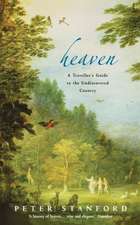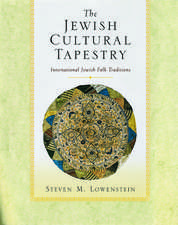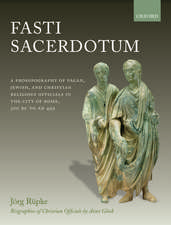The Lead Books of Granada: Early Modern History: Society and Culture
Autor E. Draysonen Limba Engleză Hardback – 15 noi 2013
| Toate formatele și edițiile | Preț | Express |
|---|---|---|
| Paperback (2) | 220.90 lei 6-8 săpt. | |
| Palgrave Macmillan UK – 15 noi 2013 | 220.90 lei 6-8 săpt. | |
| Palgrave Macmillan UK – 2013 | 221.06 lei 6-8 săpt. | |
| Hardback (1) | 393.52 lei 6-8 săpt. | |
| Palgrave Macmillan UK – 15 noi 2013 | 393.52 lei 6-8 săpt. |
Din seria Early Modern History: Society and Culture
-
 Preț: 340.61 lei
Preț: 340.61 lei -
 Preț: 221.08 lei
Preț: 221.08 lei - 15%
 Preț: 640.37 lei
Preț: 640.37 lei - 15%
 Preț: 644.49 lei
Preț: 644.49 lei -
 Preț: 391.61 lei
Preț: 391.61 lei - 15%
 Preț: 589.65 lei
Preț: 589.65 lei - 15%
 Preț: 645.60 lei
Preț: 645.60 lei -
 Preț: 389.11 lei
Preț: 389.11 lei - 15%
 Preț: 641.71 lei
Preț: 641.71 lei - 18%
 Preț: 724.63 lei
Preț: 724.63 lei - 18%
 Preț: 1221.21 lei
Preț: 1221.21 lei - 18%
 Preț: 1057.17 lei
Preț: 1057.17 lei - 15%
 Preț: 643.99 lei
Preț: 643.99 lei - 18%
 Preț: 729.53 lei
Preț: 729.53 lei - 15%
 Preț: 588.83 lei
Preț: 588.83 lei -
 Preț: 330.65 lei
Preț: 330.65 lei -
 Preț: 405.48 lei
Preț: 405.48 lei - 15%
 Preț: 641.53 lei
Preț: 641.53 lei -
 Preț: 382.75 lei
Preț: 382.75 lei - 8%
 Preț: 536.21 lei
Preț: 536.21 lei - 15%
 Preț: 699.77 lei
Preț: 699.77 lei - 18%
 Preț: 780.82 lei
Preț: 780.82 lei - 15%
 Preț: 699.77 lei
Preț: 699.77 lei -
 Preț: 392.60 lei
Preț: 392.60 lei - 15%
 Preț: 640.06 lei
Preț: 640.06 lei - 15%
 Preț: 640.88 lei
Preț: 640.88 lei - 15%
 Preț: 642.68 lei
Preț: 642.68 lei - 15%
 Preț: 640.55 lei
Preț: 640.55 lei - 15%
 Preț: 635.01 lei
Preț: 635.01 lei -
 Preț: 386.00 lei
Preț: 386.00 lei
Preț: 393.52 lei
Nou
Puncte Express: 590
Preț estimativ în valută:
75.30€ • 78.84$ • 62.46£
75.30€ • 78.84$ • 62.46£
Carte tipărită la comandă
Livrare economică 10-24 aprilie
Preluare comenzi: 021 569.72.76
Specificații
ISBN-13: 9781137358844
ISBN-10: 113735884X
Pagini: 289
Ilustrații: XV, 289 p.
Dimensiuni: 140 x 216 x 25 mm
Greutate: 0.54 kg
Ediția:2013
Editura: Palgrave Macmillan UK
Colecția Palgrave Macmillan
Seria Early Modern History: Society and Culture
Locul publicării:London, United Kingdom
ISBN-10: 113735884X
Pagini: 289
Ilustrații: XV, 289 p.
Dimensiuni: 140 x 216 x 25 mm
Greutate: 0.54 kg
Ediția:2013
Editura: Palgrave Macmillan UK
Colecția Palgrave Macmillan
Seria Early Modern History: Society and Culture
Locul publicării:London, United Kingdom
Cuprins
Timeline
Acknowledgements
Preface
1. A Mystery Unfolds
2. Books of Spells or Sacred Revelations?
3. History, Religion, Culture: Conspiracy in Context
4. Prime Suspect: Alonso del Castillo
5. Miguel de Luna: Hoaxer, Heretic or Hero?
6. 'As Precious as the Ark of the Covenant'
7. Unification in Opposition: The Strategy Of Ambivalence
8. Opposing Factions
9. Acts of Rebellion
10. Fact, Fiction, Myth: The Afterlife of the Lead Books
11. The Lead Books Today
Appendix 1. Titles of the Lead Books
Appendix 2. Summaries of the Content of the Lead Books
Appendix 3. Translation of the Lead Book entitled Libro de la Historia de la Verdad del Evangelio
Appendix 4. A Translator at Work
Appendix 5. 'Al monte santo de Granada', Sonnet by Luis de Góngora
Select Bibliography
Index
Acknowledgements
Preface
1. A Mystery Unfolds
2. Books of Spells or Sacred Revelations?
3. History, Religion, Culture: Conspiracy in Context
4. Prime Suspect: Alonso del Castillo
5. Miguel de Luna: Hoaxer, Heretic or Hero?
6. 'As Precious as the Ark of the Covenant'
7. Unification in Opposition: The Strategy Of Ambivalence
8. Opposing Factions
9. Acts of Rebellion
10. Fact, Fiction, Myth: The Afterlife of the Lead Books
11. The Lead Books Today
Appendix 1. Titles of the Lead Books
Appendix 2. Summaries of the Content of the Lead Books
Appendix 3. Translation of the Lead Book entitled Libro de la Historia de la Verdad del Evangelio
Appendix 4. A Translator at Work
Appendix 5. 'Al monte santo de Granada', Sonnet by Luis de Góngora
Select Bibliography
Index
Recenzii
“Across the book’s eleven chapters, the author surveys the history and use of the forgeries from their discovery to the present day, focusing particularly on questions of authorship and contexts of production and reproduction. … there is much in this book that will be of use to scholars and students alike, and the translations and summaries of sources are particularly welcome.” (Rosa Vidal Doval, Modern Language Review, Vol. 112, October, 2017)
“Drayson’s well-written book is a timely addition to a renewed scholarly interest in early-modern forgery and its role in the cultivation of new forms of critical inquiry along with the cultivation of religious and national heritage through antiquities (forged or authentic), as exemplified in the works of Katrina Olds and Katie Harris, among others. … for non-Spanish speakers, Drayson’s translations throughout the text and in the appendices will be of particular value.” (Claire Gilbert, The Catholic Historical Review, Vol. 102 (1), Winter, 2016)
“This excellent book by Elizabeth Drayson, the first full-length study in English of the events surrounding the discovery in Granada in the late sixteenth century of strange manuscripts … is therefore a very welcome addition. The story itself is straightforward enough: how it evolved, who it involved, and what it was all about are, however, anything but straightforward and Drayson does an excellent job in navigating the at times treacherous waters on which some of the protagonists were sailing.” (Trevor J. Dadson, Hispanic Research Journal, Vol. 17 (3), June, 2016)
“The target audience for this book will be Anglophone readers in search of a manageable overview of the affair of the lead books. The book’s usefulness is increased by its appendices of primary sources in translation, including an English translation of one of the plomos, a comprehensivelist of all twenty-two lead books, and a brief summary of each. For these efforts the author is to be commended.” (Katrina B. Olds, Bulletin of Spanish Studies, Vol. 93 (9), 2016)
“Drayson’s well-written book is a timely addition to a renewed scholarly interest in early-modern forgery and its role in the cultivation of new forms of critical inquiry along with the cultivation of religious and national heritage through antiquities (forged or authentic), as exemplified in the works of Katrina Olds and Katie Harris, among others. … for non-Spanish speakers, Drayson’s translations throughout the text and in the appendices will be of particular value.” (Claire Gilbert, The Catholic Historical Review, Vol. 102 (1), Winter, 2016)
“This excellent book by Elizabeth Drayson, the first full-length study in English of the events surrounding the discovery in Granada in the late sixteenth century of strange manuscripts … is therefore a very welcome addition. The story itself is straightforward enough: how it evolved, who it involved, and what it was all about are, however, anything but straightforward and Drayson does an excellent job in navigating the at times treacherous waters on which some of the protagonists were sailing.” (Trevor J. Dadson, Hispanic Research Journal, Vol. 17 (3), June, 2016)
“The target audience for this book will be Anglophone readers in search of a manageable overview of the affair of the lead books. The book’s usefulness is increased by its appendices of primary sources in translation, including an English translation of one of the plomos, a comprehensivelist of all twenty-two lead books, and a brief summary of each. For these efforts the author is to be commended.” (Katrina B. Olds, Bulletin of Spanish Studies, Vol. 93 (9), 2016)
Notă biografică
Elizabeth Drayson is Senior College Lecturer in Spanish at Murray Edwards College and Peterhouse, University of Cambridge, UK. She specializes in medieval and Early Modern Spanish literature and cultural history, and her monograph The King and the Whore: King Roderick and La Cava was published by Palgrave Macmillan in 2007.
Textul de pe ultima copertă
The Lead Books of Granada is the first full-length book in English to investigate the story of the remarkable forgeries fabricated in late sixteenth-century Spain and uncovered on the Sacromonte hillside in Granada in 1595. The unearthing of twenty-two lead discs, which contained sayings of the Virgin Mary, St Peter and St James written in Arabic, Latin and Castilian, rocked the whole of Spain and attracted the attention of the Vatican. Heralded as astonishing archaeological discoveries as significant as the Ark of the Covenant, the Lead Books were widely believed to be authentic by the Catholic Church in Spain, yet one hundred years later in 1682, the Vatican condemned them as Islamic heresies, consigning them to oblivion in dusty archives until 2000, when they were returned to Granada. Now published for the first time in paperback, this book evaluates the cultural status and importance of the Lead Books, polyvalent and ambiguous texts that embody many of the dualities and paradoxes inherent in the racial and religious dilemmas of Spain in the sixteenth and seventeenth centuries.
Caracteristici
Author plans to tie this book in with a planned TV programme she is involved with on the lead books in early 2016 The Granadan artefacts not only address the pressing issues of religious politics in their time but also of our own First fulllength monograph to be published on this subject and very few books written in English on the subject at all













